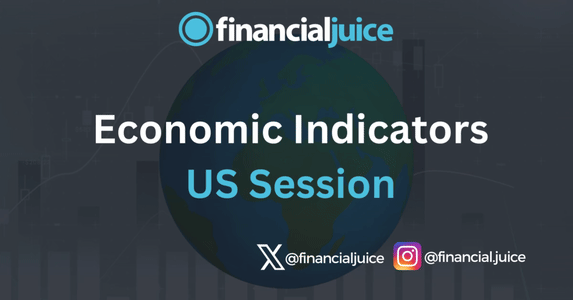
Week Ahead: Economic Indicators (US)
Hey, Traders!
For the April 1st Week, here is a list of all of the major economic indicators being released during the US Session, with a brief synopsis of what they represent and what to possibly expect from the markets in reaction.
Monday 1st April
10:00 ET
US ISM Manufacturing PMI
The ISM Manufacturing PMI, measures the health of the manufacturing sector.
Similar to other PMI indicators, a reading above 50 indicates expansion in the manufacturing sector, while a reading below 50 suggests contraction. The PMI is based on five major survey areas — each of which is weighted equally: New orders, Inventory levels, Production, Supplier deliveries, Employment.
What to Expect
The ISM manufacturing PMI has been in contraction for 16 consecutive straight months and from it’s last data release a further decline didn’t spark any recess fears, however markets took it as a positive indication that the Fed won’t have to hold rates for longer. If the PMI were to follow the same trend and decline again markets may view the data in the exact same way.
Tuesday 2nd April
10:00 ET
US JOLTS Job Openings for February
The US Job Openings and Labor Turnover Survey (JOLTS) provides monthly data on job openings, hires, separations, and other labor market dynamics in the United States.
It offers insights into the demand for labor and the overall health of the job market.
Job openings represent unfilled positions that are actively being recruited for by employers.
Analyzing JOLTS data helps assess trends in job creation, labor market tightness, and worker mobility, providing valuable information for understanding the dynamics of the US labor market.
The JOLTS data is the oldest bit of employment data this week, representing the month of February, while ADP and Nonfarm Payrolls reports represent the month of March.
Having said that, with employment a key piece of the Fed’s monetary policy puzzle, markets will still monitor this.
What to Expect
If JOLTS comes in higher than expected, that indicates there are a larger number of job openings, which means that there is demand on the corporate side to hire more staff.
This can be seen as an upside inflation risk, and a threat to the Fed’s 2% inflation target, as higher demand for staff indicates corporations are not being affected as the Fed would like by tight monetary policy.
This could cause strength in the dollar and weakness in US stocks.
Wednesday 3rd April
8:15 ET
US ADP Employment Change for March
The ADP Employment Change compiled by the ADP Research Institute utilizes actual payroll data from a diverse array of private-sector employers to gauge changes in employment levels.
Excluding government and farm employment, the ADP figures provide insights into the dynamics of the private labor market, covering small, medium, and large businesses.
What to Expect
While the Fed does wish to uphold its dual mandate of 2% inflation with maximum job growth, an overly hot reading may have negative implications for the future of inflation. This could send the dollar up and stocks down.
9:45 ET
US S&P Services PMI March Final
The US S&P Services Purchasing Managers’ Index evaluates the health of the services sector in the United States.
Through surveys conducted among purchasing managers in diverse industries, such as finance, healthcare, and retail, the PMI assesses key factors like employment, new orders, and business activity.
As a diffusion index, a PMI score above 50 indicates expansion in the sector, reflecting positive economic activity, while a score below 50 suggests contraction.
What to Expect
Markets have been reacting positively to lower Services PMI data, as seen in the last release.
This is most likely due to the services sector getting closer to contraction, which may aid in taming inflation.
The service sector is also an area where the Fed has said they need to see some more cooling.
10:00 ET
US ISM Services PMI for March
The US Institute for Supply Management Services Purchasing Managers’ Index, like the S&P Services PMI, measures the health of the services sector.
Similar to other PMI indicators, a reading above 50 indicates expansion in the services sector, while a reading below 50 suggests contraction.
What to Expect
Markets have been reacting positively to lower Services PMI data, as seen in the last release. This is most likely due to the services sector getting closer to contraction, which may aid in taming inflation.
The service sector is also an area where the Fed has said they need to see some more cooling.
Therefore a lower-than-expected reading may result in US stock strength and Dollar weakness.
Wells Fargo notes: More recently, demand in the services sector has been robust with the new orders index notching readings of 55.0 and 56.1 in January and February. With demand showing little sign of abating, the prices paid component is set to remain in expansion for the foreseeable future even after factoring in the sharp 5.4 point drop to 58.6 in February.
10:30 ET
The US Weekly Energy Information Administration Crude Oil Inventories report provides information on the total stockpile of crude oil in the United States.
It includes data on the changes in crude oil inventories, indicating whether there has been an increase or decrease in the amount of oil held in storage.
This report assesses supply and demand dynamics in the oil market and can influence oil prices.
What to Expect
A significant buildup in inventories may indicate oversupply, putting downward pressure on prices, while a decline may suggest increased demand, potentially impacting prices in the opposite direction.
Thursday 4th April
8:30 ET
US Trade Balance for February
The US Trade Balance for February is an economic indicator that measures the difference between the value of the goods and services exported by the United States and the value of goods and services imported into the country during that month.
A positive trade balance indicates that exports exceed imports, which can contribute positively to economic growth and employment.
Conversely, a negative trade balance, or trade deficit, means that imports exceed exports, which can put downward pressure on economic growth and employment.
The US Trade Balance provides insights into the country’s international trade dynamics and its impact on the overall economy.
What to Expect
The United States, a significant importer of products, has been in a trade deficit since 1975.
While unlikely to influence markets, a smaller-than-anticipated trade deficit would signal faster growth in the United States, which might be interpreted as an upside inflation risk if it is far smaller than expected, or as a relief to recession fears if it is only slightly smaller.
US Weekly Initial & Continued Jobless Claims
The US Initial Jobless Claims report provides data on the number of individuals who filed for unemployment benefits for the first time during the previous week.
It serves as an indicator of the labor market’s health, with higher numbers indicating increased layoffs and economic instability, while lower numbers suggest a stronger job market.
Continued Jobless Claims, on the other hand, represent the number of individuals who remain on unemployment benefits after their initial claim.
What to Expect
Employment is one of the Fed’s mandates; yet, FOMC officials have stated that they consider a higher unemployment rate as consistent with their goal of returning to 2% inflation. This means that greater-than-expected jobless claims, implying higher unemployment, are likely to be interpreted by the Fed as good news for inflation’s return to target. This scenario might force US stocks to rise and the currency to fall.
Friday 5th April
8:30 ET
US Employment situation for March
US Nonfarm Payrolls for March
US Nonfarm Payrolls, commonly referred to as NFP, is a key economic indicator published by the Bureau of Labor Statistics on a monthly basis.
It represents the total number of paid workers in the US, excluding farm employees, government workers, and non-profit organization employees.
The NFP report provides insights into the overall health of the labor market, reflecting changes in employment levels.
The data is closely watched by policymakers, economists, and investors for its impact on financial markets and economic policy decisions.
US Unemployment Rate
The US Unemployment Rate is a widely tracked economic indicator that measures the percentage of the labor force that is unemployed and actively seeking employment.
It is calculated by dividing the number of unemployed individuals by the total labor force.
The Unemployment Rate can differ from the Nonfarm Payrolls data due to differences in their definitions and methods of measurement.
While NFP represents the total number of paid workers in the US, excluding certain categories like farm and government employees, the Unemployment Rate considers the percentage of the labor force that is actively seeking but unable to find employment.
US Average Earnings YoY
US Average Earnings Year-over-Year is an economic indicator that measures the annual percentage change in the average earnings of all non-farm employees in the United States.
This data is typically derived from the monthly employment reports released by the US Bureau of Labor Statistics.
Average earnings include wages and salaries, and the YoY comparison helps assess the rate of change in workers’ compensation over a one-year period.
Positive growth in Average Earnings YoY is indicative of increasing income levels, while negative growth suggests a decline in average earnings. Policymakers, economists, and investors monitor this indicator for insights into wage trends and their implications for consumer spending and inflation.
What to Expect
The US non-farm payrolls is the most highly monitored employment indicator by both traders and policymakers. A higher-than-expected reading suggests that employment is not slowing, posing an upside risk to inflation. This may lead authorities to maintain interest rates higher for longer. This repricing of the future of US monetary policy may create weakness in US stocks while strengthening the dollar. The inverse could also be true. Having said that, members will also look at average earnings statistics to see if rising salaries are posing possible inflation issues.
In comments from Powell and other FOMC officials, they have also noted a refocus back onto the ‘dual mandate’, (which includes employment), so while a slight cooling in the employment situation may be seen as reinforcing dovish Fed bets, too much could go against the other element of the Fed’s dual mandate, and increase recession fears.
Notes from Wells Fargo:
Another month of solid payroll growth in February demonstrated that the jobs market has yet to buckle under the weight of restrictive monetary policy. Nonfarm payrolls expanded by 275K in February, lifting the three-month average to 265K. Underneath recent payroll strength, however, lie signs of the jobs market softening. Temporary help employment has declined for 23 consecutive months, the ranks of permanent job losers are rising and the share of part-time workers is growing. Declining small business hiring plans and only modestly-expansionary readings of employment in regional Fed purchasing managers’ indices further point to demand for workers ebbing.
As we move through the year, we expect to see payroll growth downshift further amid dwindling scope for catch-up hiring and slower growth in the labor supply. However, with payroll growth still flying north of 200K, there is altitude to lose before the Fed is faced with a more menacing trade-off between the employment and price stability sides of its mandate.




